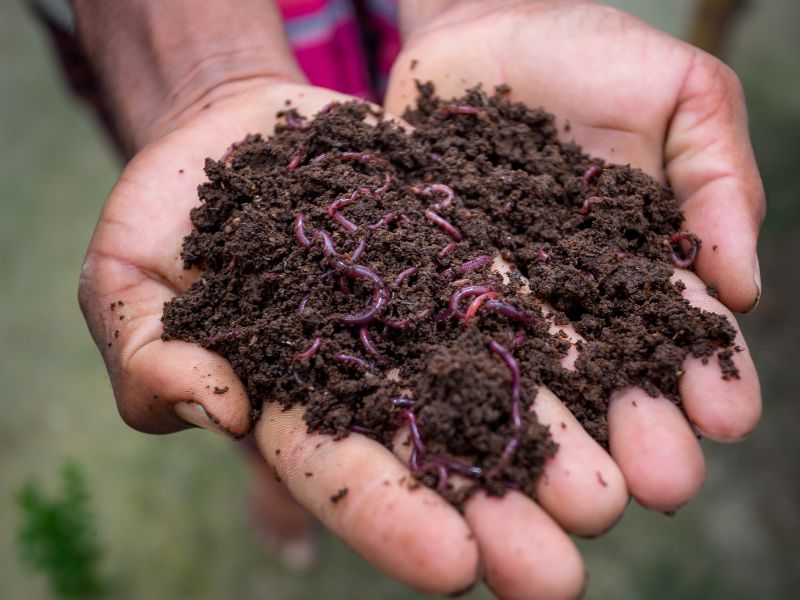Compost: It’s Alive!

The physical and chemical conditions in a compost heap seem logical if you think about what compost really is: an enormous pile of food for billions of minute organisms. These microorganisms have certain chemical requirements, including carbon for energy, nitrogen to build proteins, and oxygen for respiration. The most numerous organisms in a compost pile are bacteria and fungi, which appear naturally and do not even have to be added to compost!
In compost, fungi are important because they break down tough debris like cellulose. They can attack organic residues that are too dry, acidic, or low in nitrogen for bacterial decomposition. Bacteria, on the other hand, are present virtually everywhere and enter the pile on every bit of organic matter. They also generate the heat associated with composting and perform the primary breakdown of organic materials, setting the stage for larger decomposers to continue the job (Please see our Decomposer Field Guide for more information).
Compost in outdoor piles or bins provides an ideal environment for a vast array of invertebrates commonly found in soil and decaying vegetation. Although most of the decomposition is carried out by microorganisms, invertebrates aid in the process by breaking down organic matter and changing its chemical form through digestion. If the compost heats up, the invertebrates may go dormant or move to the periphery of the pile where temperatures are cooler.
Different communities of microorganisms predominate during different temperature phases. Initial decomposition is carried out by psychrophilic bacteria. These cold-loving organisms are responsible for the first wave of microbial activity and can exist at temperatures below 68ºF. Their presence is followed by mesophilic microorganisms, which thrive at moderate temperatures. These microbes rapidly break down the soluble, easily degradable compounds in your compost pile, and the heat they produce causes the temperature of the pile to rapidly rise. Once temperatures exceed 100ºF, mesophilic microorganisms become less competitive and are replaced by thermophilic, or heat-loving, microbes. During the thermophilic stage, high temperatures accelerate the breakdown of proteins, fats, and complex carbohydrates like cellulose and hemicellulose, the major structural molecules in plants. In hot piles with temperatures over 140ºF, hyperthermophilic bacteria can be found; however, their life span is only a few days.
As the supply of essential compounds becomes exhausted, the compost temperature gradually decreases and mesophilic microorganisms once again take over for the final phase of “curing,” or maturation of remaining organic matter. Although the compost temperature is nearly ambient, or almost the same temperature as its surroundings, chemical reactions continue to occur that make the remaining organic matter more stable and suitable for plant use.
